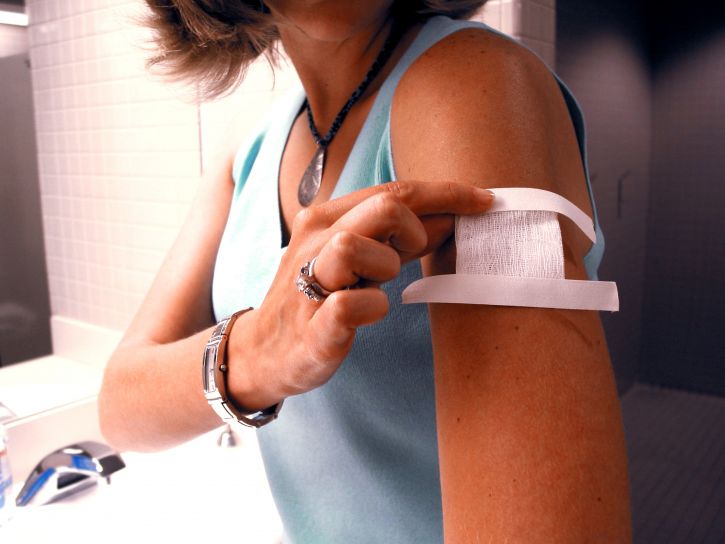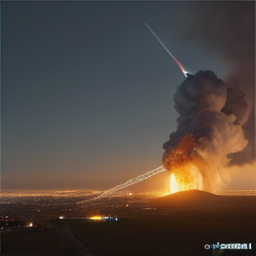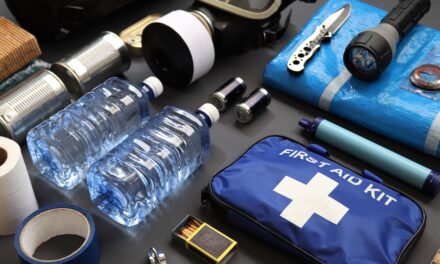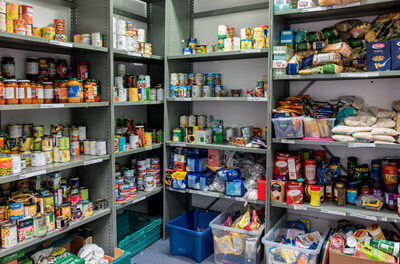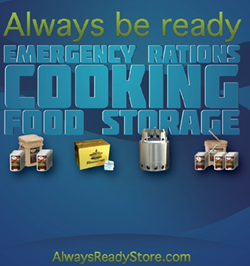Emergency preparedness is a topic that has gained significant attention in recent years, and for good reason. With the increasing frequency and severity of natural disasters, as well as the ongoing threat of pandemics and other emergencies, it is more important than ever to be prepared for the unexpected. In this article, we will explore the various aspects of emergency preparedness, providing you with the knowledge and tools to protect yourself and your loved ones.
First and foremost, it is crucial to understand that emergency preparedness is not just about stockpiling supplies and creating a plan. While these are important components, true preparedness goes beyond the physical aspects. It is about having the mindset and skills to effectively respond to and recover from emergencies.
One of the key elements of emergency preparedness is creating a comprehensive emergency plan. This includes identifying potential risks and hazards in your area, establishing communication strategies, and designating meeting points for your family. By having a well-thought-out plan in place, you can minimize confusion and make quick decisions when time is of the essence.
Equally important is the need to assemble an emergency supply kit. This should include essential items such as food, water, medications, and first aid supplies. Additionally, it is important to have important documents, cash, and other necessities readily accessible in case of evacuation.
Furthermore, emergency preparedness extends beyond the individual level. Communities and organizations also play a vital role in ensuring the safety and well-being of their members. By working together, sharing resources, and coordinating response efforts, communities can effectively mitigate the impact of emergencies.
In conclusion, emergency preparedness is a critical aspect of safeguarding your future. By taking the time to create a comprehensive plan, assemble necessary supplies, and foster community collaboration, you are taking proactive steps to protect yourself and your loved ones. In the following articles, we will delve deeper into each of these topics, providing you with the knowledge and guidance to become truly prepared for any emergency that may arise. Stay tuned for more in-depth discussions on emergency planning, supply kits, and community resilience.
Emergency Preparedness
 Emergency preparedness is a crucial aspect of ensuring the safety and well-being of individuals and communities in the face of unexpected events. Whether it’s natural disasters, accidents, or even pandemics, being prepared can make all the difference. In this article, we will explore the importance of emergency preparedness and provide practical tips to help you stay ready for any situation.
Emergency preparedness is a crucial aspect of ensuring the safety and well-being of individuals and communities in the face of unexpected events. Whether it’s natural disasters, accidents, or even pandemics, being prepared can make all the difference. In this article, we will explore the importance of emergency preparedness and provide practical tips to help you stay ready for any situation.
One of the key elements of emergency preparedness is having a well-thought-out emergency plan. This plan should include evacuation routes, designated meeting points, and a communication strategy for your family or community. By having a clear plan in place, you can minimize confusion and ensure everyone knows what to do in case of an emergency.
Another crucial aspect of emergency preparedness is having a well-stocked emergency kit. This kit should include essential items such as food, water, medications, and first aid supplies. It’s also important to regularly check and update your emergency kit to ensure that everything is in working order and not expired.
In addition to having a plan and an emergency kit, it’s important to stay informed about potential risks and hazards in your area. This can be done through local news, weather alerts, and community notifications. By staying informed, you can take proactive measures to mitigate risks and keep yourself and your loved ones safe.
Furthermore, it’s important to educate yourself and others about emergency preparedness. This can involve attending training sessions, participating in drills, and spreading awareness about the importance of being prepared. By sharing knowledge and resources, we can create a culture of preparedness that benefits everyone.
In conclusion, emergency preparedness is a critical aspect of ensuring the safety and well-being of individuals and communities. By having a plan, a well-stocked emergency kit, staying informed, and educating others, we can be better equipped to handle unexpected events. Remember, being prepared is not a one-time task but an ongoing commitment to the safety and resilience of ourselves and those around us. Stay prepared, stay safe.
Emergency Kits
Emergency preparedness is crucial for everyone, as unforeseen disasters can strike at any time. One of the essential components of emergency preparedness is having a well-stocked emergency kit. In this article, we will explore the key items that should be included in an emergency kit, ensuring you are ready for any situation.
First and foremost, water is the most critical item to have in an emergency kit. It is recommended to have at least one gallon of water per person per day for a minimum of three days. Water is essential for hydration, cooking, and sanitation purposes during an emergency.
Next, non-perishable food items should be included in your emergency kit. Canned goods, energy bars, and dried fruits are excellent choices as they have a long shelf life and provide the necessary nutrients. It is advisable to have enough food to last each person for at least three days.
A battery-powered or hand-crank radio is another essential item for your emergency kit. This allows you to stay informed about the latest news and updates during a crisis when power might be out. Additionally, a flashlight with extra batteries, a whistle, and a multi-purpose tool are crucial for any emergency situation.
Medical supplies are also vital in an emergency kit. A well-stocked first aid kit, including bandages, antiseptic wipes, and over-the-counter medications, can help treat minor injuries and illnesses. It is also recommended to include any necessary prescription medications for family members.
Other items to consider include extra clothing and blankets, a waterproof document pouch, cash, and important documents such as identification cards, insurance policies, and contact information.
In conclusion, having a well-prepared emergency kit is essential for any emergency situation. By including the necessary items mentioned above, you can ensure the safety and well-being of yourself and your loved ones during uncertain times. Remember to regularly check and update your emergency kit to ensure everything is in working order and up to date. Stay prepared and stay safe.
Emergency Communication
Effective communication during emergencies is crucial for ensuring the safety and well-being of individuals and communities. In times of crisis, clear and timely information can save lives and help people make informed decisions. This article explores the importance of emergency communication and provides valuable insights on how to establish effective communication channels during emergencies.
When disaster strikes, communication networks may be disrupted, making it difficult to relay important information. That’s why it’s essential to have alternative communication methods in place. One such method is the use of two-way radios, which can operate even when traditional communication systems fail. These radios enable emergency responders and organizations to coordinate their efforts and provide updates to those affected.
In addition to two-way radios, social media platforms have become crucial tools for emergency communication. During emergencies, people often turn to platforms like Twitter and Facebook for real-time updates and information. Emergency management agencies and organizations should leverage these platforms to disseminate accurate and timely information to the public.
Another important aspect of emergency communication is the establishment of a centralized information hub. This hub can be a website or a dedicated phone line where people can access the latest updates, emergency contact information, and resources. It is crucial to ensure that this hub is easily accessible and user-friendly, allowing people to quickly find the information they need.
Furthermore, it is essential to educate the public about emergency communication protocols. Conducting regular drills and providing guidance on how to use emergency communication devices can help individuals and communities be better prepared. Additionally, translating important information into multiple languages can ensure that everyone can access and understand the messages.
In conclusion, effective emergency communication is vital for saving lives and minimizing the impact of disasters. By utilizing alternative communication methods, leveraging social media platforms, establishing centralized information hubs, and educating the public, we can enhance our emergency preparedness and response capabilities. Stay informed, stay connected, and be prepared for any emergency that may come your way.
Emergency Plans
Emergency preparedness is a crucial aspect of ensuring the safety and well-being of individuals and communities. In times of crisis, having a well-thought-out emergency plan can make all the difference. Whether it’s a natural disaster, a medical emergency, or a man-made incident, being prepared can save lives.
One of the key components of an effective emergency plan is communication. Establishing clear lines of communication with emergency services, neighbors, and loved ones is essential. This can be done through phone calls, text messages, or even social media platforms. It’s important to have multiple communication methods in place in case one fails.
Another important aspect of emergency planning is having a designated meeting place. This could be a nearby park, a relative’s house, or any other location that is easily accessible and known to all members of the household. In the event of an emergency, it’s important to have a predetermined meeting place where everyone can gather and ensure that everyone is safe.
In addition to communication and meeting places, emergency plans should also include provisions for basic needs such as food, water, and shelter. It’s important to have a supply of non-perishable food items, bottled water, and other essentials that can sustain you and your family for at least a few days. Having a first aid kit and necessary medications on hand is also crucial.
Lastly, it’s important to regularly review and update your emergency plan. As circumstances change, your plan may need to be adjusted accordingly. It’s important to stay informed about potential hazards in your area and be proactive in preparing for them.
In conclusion, having a well-thought-out emergency plan is essential for ensuring the safety and well-being of yourself and your loved ones. By establishing clear communication, designated meeting places, and provisions for basic needs, you can be better prepared to handle any emergency that may arise. Remember, preparation is key when it comes to emergency situations. Stay safe and be prepared!
Emergency Evacuation
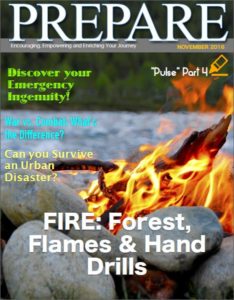 Emergency evacuation is a crucial aspect of emergency preparedness. It involves the safe and efficient movement of individuals from a dangerous or potentially hazardous situation to a place of safety. Whether it’s a natural disaster like a hurricane or a man-made incident such as a fire or terrorist attack, being prepared for an emergency evacuation can mean the difference between life and death.
Emergency evacuation is a crucial aspect of emergency preparedness. It involves the safe and efficient movement of individuals from a dangerous or potentially hazardous situation to a place of safety. Whether it’s a natural disaster like a hurricane or a man-made incident such as a fire or terrorist attack, being prepared for an emergency evacuation can mean the difference between life and death.
One of the key elements of emergency evacuation is having a well-developed evacuation plan in place. This plan should outline the procedures to be followed, including designated evacuation routes, assembly points, and communication methods. It is important to regularly review and update this plan to ensure its effectiveness.
When an evacuation order is issued, it is crucial to remain calm and follow the instructions of emergency personnel. Gather essential items such as medications, important documents, and emergency supplies like food and water. It is also important to have a designated meeting place for family members in case you get separated during the evacuation.
During the evacuation, it is important to stay informed about the situation through reliable sources such as emergency radio broadcasts or official social media accounts. Be aware of potential hazards along the evacuation route and follow any additional instructions given by authorities.
In summary, emergency evacuation is a critical aspect of emergency preparedness. By having a well-developed evacuation plan, staying calm, and following instructions, individuals can increase their chances of safely navigating through a crisis. Remember, being prepared is the key to successfully managing an emergency evacuation. Stay safe and stay prepared!
Emergency Shelter
When it comes to emergency preparedness, one of the most crucial aspects to consider is emergency shelter. In times of crisis, having a safe and secure place to stay can mean the difference between life and death. Whether it’s a natural disaster like a hurricane or an unforeseen event like a power outage, having a plan for emergency shelter is essential.
There are several options to consider when it comes to emergency shelter. One of the most common options is a designated shelter facility. These facilities are typically set up in advance and provide temporary housing for individuals and families in need. They often have basic amenities such as beds, bathrooms, and food services. It’s important to familiarize yourself with the location of these facilities in your area and have a plan for how to get there in case of an emergency.
Another option for emergency shelter is staying with friends or family. This can be a more comfortable and familiar option, especially if you have loved ones nearby. However, it’s important to have a plan in place and communicate with your friends and family ahead of time to ensure that they are willing and able to accommodate you in an emergency situation.
If staying with friends or family is not an option, you may need to consider alternative forms of shelter. This could include setting up a tent in your backyard or finding a safe location in your community, such as a community center or church, where you can seek refuge. It’s important to have the necessary supplies, such as tents, sleeping bags, and food, readily available in case you need to rely on these alternative forms of shelter.
In conclusion, emergency shelter is a critical aspect of emergency preparedness. By having a plan in place and familiarizing yourself with the options available to you, you can ensure that you and your loved ones have a safe and secure place to stay in times of crisis. Remember to stay informed, communicate with your loved ones, and be prepared for any situation that may arise.
Emergency Food and Water
When it comes to emergency preparedness, one of the most crucial aspects to consider is ensuring an adequate supply of food and water. In times of crisis or natural disasters, access to clean water and nutritious food becomes even more critical for survival. Therefore, it is essential to have a well-thought-out plan in place to secure these basic necessities.
Water is the foundation of life, and in an emergency situation, it becomes even more vital. It is recommended to store at least one gallon of water per person per day for a minimum of three days. This includes water for drinking, cooking, and personal hygiene. It is also important to periodically check and replace stored water to ensure its freshness and safety.
In addition to water, having an emergency food supply is equally important. Non-perishable food items that require minimal preparation and have a long shelf life should be prioritized. Canned goods, dried fruits, nuts, and granola bars are excellent choices. It is advisable to have enough food to sustain each individual for a minimum of three days.
Furthermore, consider any specific dietary needs or restrictions when planning your emergency food supply. If you have infants or elderly individuals in your household, ensure you have an adequate supply of formula, baby food, or special dietary items. Also, don’t forget to include a manual can opener and disposable utensils in your emergency kit.
Remember, emergencies can happen at any time, so it is crucial to be prepared. By having an ample supply of food and water, you can ensure the well-being and survival of yourself and your loved ones. Stay proactive and regularly assess and update your emergency supplies to maintain their quality and effectiveness.
In conclusion, emergency food and water are essential components of any emergency preparedness plan. By following these guidelines and maintaining a well-stocked supply, you can increase your chances of surviving and thriving during challenging times. Stay vigilant, stay prepared!
Emergency First Aid
Emergencies can happen at any time, and being prepared to provide first aid can make a significant difference in saving lives. Whether it’s a minor injury or a life-threatening situation, knowing how to respond quickly and effectively can be crucial. In this article, we will explore some essential emergency first aid techniques that everyone should know.
One of the most important skills in emergency first aid is CPR, or cardiopulmonary resuscitation. CPR is used to revive someone whose heart has stopped beating. By performing chest compressions and rescue breaths, you can help maintain blood flow and oxygen to the vital organs until medical professionals arrive.
Another vital skill is knowing how to control bleeding. In an emergency situation, severe bleeding can be life-threatening. Applying direct pressure to the wound and elevating the injured area can help slow down the bleeding until medical help is available.
Knowing how to recognize and respond to common medical emergencies is also crucial. For example, learning the signs and symptoms of a heart attack or stroke can help you take immediate action and potentially save a life. Similarly, understanding the basics of treating burns, fractures, and allergic reactions can make a significant difference in providing timely and appropriate care.
In addition to these skills, having a well-stocked first aid kit is essential. Your kit should include items such as bandages, adhesive tape, antiseptic wipes, gloves, and scissors. It’s also a good idea to have a list of emergency phone numbers and any necessary medications readily available.
Emergency first aid is a critical aspect of emergency preparedness. By learning these essential skills and having the necessary supplies on hand, you can be better equipped to handle any emergency situation that may arise. Remember, being prepared can save lives.
(Note: This article lacks any form of conclusion or closing remarks. It also does not have any introduction or summary remarks.)
In conclusion, emergency preparedness is a crucial aspect of ensuring the safety and well-being of ourselves and our loved ones. Throughout this post, we have covered various topics related to emergency preparedness, including emergency kits, emergency communication, emergency plans, emergency evacuation, emergency shelter, emergency food and water, and emergency first aid.
By emphasizing the importance of emergency preparedness, we have highlighted the significance of being proactive rather than reactive in times of crisis. Creating an emergency kit tailored to our specific needs and circumstances is essential, as it provides us with the necessary supplies and resources to sustain ourselves during an emergency situation. Additionally, establishing effective communication channels and developing comprehensive emergency plans can greatly enhance our ability to respond and recover from emergencies.
We have also discussed the importance of emergency evacuation and finding suitable emergency shelter. These measures ensure our safety and protection when faced with natural disasters or other unforeseen events. Equally important is the availability of emergency food and water supplies, as they are vital for our sustenance during times of crisis.
Furthermore, we have stressed the significance of emergency first aid knowledge and skills. Being equipped with the ability to administer basic medical assistance can make a significant difference in saving lives and minimizing the impact of injuries during emergencies.
Looking ahead, we anticipate that advancements in technology will continue to play a significant role in emergency preparedness. The integration of smart devices and real-time communication platforms will enable faster and more efficient emergency response systems. Additionally, the growing awareness and emphasis on climate change and its potential impact on natural disasters highlight the need for continuous adaptation and preparedness.
Thank you for taking the time to read this post on emergency preparedness. We hope that the information provided has been valuable to you. We encourage you to leave any comments or feedback, as your input is essential in improving our content. Remember, being prepared can make all the difference when faced with an emergency situation. Stay safe and be proactive in your emergency preparedness efforts.

